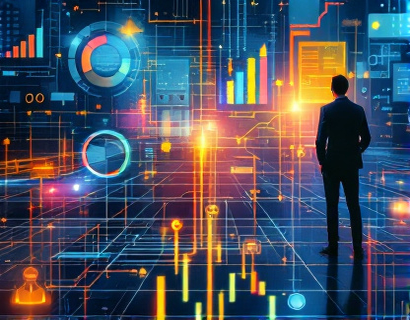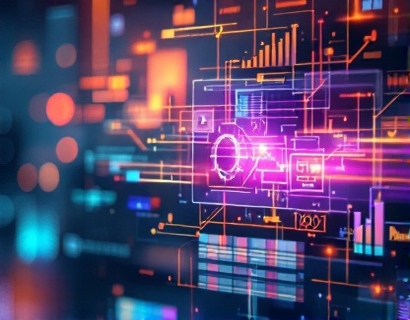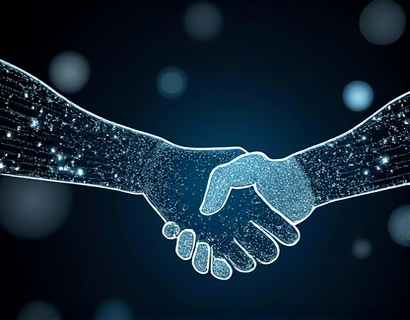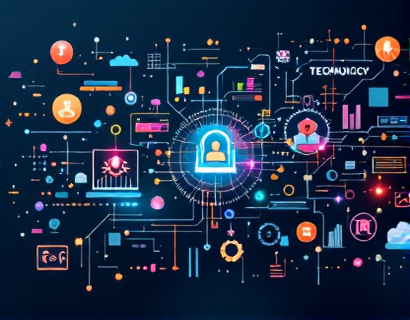Revolutionizing Digital Asset Verification: The Impact of Decentralized dApps on Ucosystem Premium Access
The emergence of decentralized applications, or dApps, has brought about a significant transformation in the way digital assets are verified and managed. This shift is particularly impactful for holders of Ucosystem digital assets, who now have access to streamlined verification processes that unlock premium features and benefits across the Ucosystem. This article delves into the intricacies of how these decentralized dApps are revolutionizing digital asset verification, enhancing security, efficiency, and user experience.
Understanding Digital Asset Verification
Digital asset verification is the process of confirming the authenticity and ownership of digital assets such as cryptocurrencies, tokens, and other blockchain-based assets. Traditionally, this process involves interacting with centralized exchanges or platforms, which can be prone to delays, high fees, and potential security risks. The introduction of decentralized dApps has addressed these issues by providing a trustless, transparent, and secure method for verifying digital asset holdings.
The Role of Decentralized dApps in Ucosystem Premium Access
For Ucosystem users, accessing premium features and benefits often requires verifying their digital asset holdings. Decentralized dApps play a crucial role in this process by offering a seamless and secure verification mechanism. These dApps leverage blockchain technology to ensure that asset verification is both accurate and tamper-proof, thereby granting users premium access without the need for intermediaries.
Enhanced Security and Trust
One of the primary advantages of using decentralized dApps for digital asset verification is the enhanced security they provide. By eliminating central points of failure, these dApps reduce the risk of data breaches and unauthorized access. The decentralized nature of the blockchain ensures that verification data is distributed across multiple nodes, making it extremely difficult for malicious actors to alter or manipulate the information.
Moreover, the transparency of blockchain technology allows users to verify the integrity of the verification process themselves. This level of transparency builds trust among users, as they can independently confirm that their asset holdings have been accurately verified.
Streamlined Verification Process
The verification process facilitated by decentralized dApps is notably more efficient compared to traditional methods. Users can verify their digital asset holdings with just a few clicks, without the need to navigate complex forms or wait for manual approvals. This streamlined process not only saves time but also reduces the friction associated with accessing premium Ucosystem features.
Decentralized dApps achieve this efficiency by automating the verification workflow. Once a user interacts with the dApp, the system automatically queries the blockchain to confirm the asset holdings. This automated process ensures that verification is quick, reliable, and consistent, providing a smooth user experience.
Unlocking Exclusive Features and Benefits
For Ucosystem users, the ability to quickly and securely verify digital asset holdings opens the door to a range of exclusive features and benefits. Premium access can include advanced trading tools, priority customer support, exclusive events, and more. These perks are designed to enhance the overall user experience and provide value to those who hold significant digital assets within the Ucosystem.
By integrating decentralized dApps into the verification process, the Ucosystem ensures that users can access these premium features without compromising on security or convenience. This approach not only retains existing users but also attracts new ones who value the transparency and efficiency of decentralized solutions.
User Empowerment and Control
Decentralized dApps empower users by giving them full control over their digital asset verification. Unlike centralized systems where users must trust a third party to handle their data, decentralized dApps allow users to manage their own verification process. This control extends to how and when users share their verification status, ensuring privacy and autonomy.
Furthermore, the decentralized nature of these dApps means that users are not dependent on a single entity for verification services. This reduces the risk of service disruptions and ensures that users can always access the verification process, even if one node in the network is unavailable.
Interoperability and Integration
The design of decentralized dApps often includes interoperability features, allowing them to work seamlessly with various blockchain networks and platforms. For Ucosystem users, this means that verification can be integrated across different aspects of the ecosystem, from asset management to trading and governance participation. This interoperability enhances the overall functionality and utility of the Ucosystem, creating a more cohesive and user-friendly environment.
Integration with other decentralized applications and services further expands the capabilities of these dApps. Users can leverage a network of interconnected tools and platforms, all while maintaining a secure and verified state of their digital assets.
Challenges and Considerations
While decentralized dApps offer numerous benefits, there are also challenges and considerations to keep in mind. One of the primary challenges is user education. Many potential users may be unfamiliar with blockchain technology and decentralized applications, which can hinder adoption. Therefore, providing clear and accessible educational resources is crucial for widespread acceptance.
Another consideration is the user interface and experience. Decentralized dApps must be designed with usability in mind to ensure that even those new to blockchain technology can navigate the verification process with ease. Intuitive design and user-friendly interfaces are essential for broadening the user base and enhancing overall satisfaction.
Future Prospects and Innovations
The future of decentralized dApps in digital asset verification is promising, with ongoing innovations set to further enhance their capabilities. One area of development is the integration of advanced cryptographic techniques to improve verification accuracy and speed. Additionally, the incorporation of machine learning and artificial intelligence can help detect and prevent fraudulent activities, adding another layer of security to the verification process.
Interoperability is also expected to improve, with more dApps and blockchain networks working together to create a seamless ecosystem. This will not only benefit Ucosystem users but also the broader decentralized finance (DeFi) community, fostering greater collaboration and innovation.
Conclusion
The introduction of decentralized dApps for digital asset verification represents a significant step forward in the Ucosystem and the wider blockchain space. By providing secure, efficient, and user-friendly verification processes, these dApps empower users to fully leverage the potential of their digital assets. As technology continues to evolve, the role of decentralized dApps in enhancing digital asset management and access to premium features will only become more prominent. For digital asset holders and Ucosystem enthusiasts, embracing these innovations is key to staying ahead in the rapidly changing landscape of blockchain technology.










































